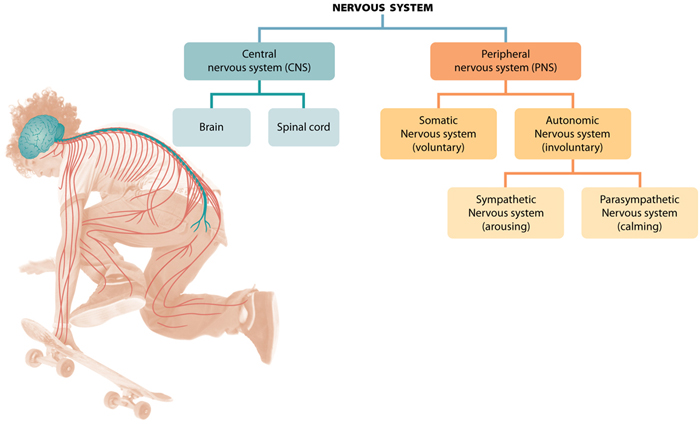The Nervous System
The central nervous system (CNS) includes the brain and the spinal cord.
The second major division of the nervous system, the peripheral nervous system, carries messages to and from the central nervous system. It consists of all of the nerve cells that are not in the brain or spinal column. It is comprised of two parts: the somatic and the autonomic nervous systems.
The somatic nervous system is composed of the sensory (afferent) neurons that carry messages to the central nervous system and the motor (efferent) neurons that carry messages from the central nervous system to the skeletal muscles of the body. Every deliberate action a person makes involves neurons in the somatic nervous system.
The autonomic nervous system carries messages between the central nervous system and the internal organs. It is broken into two parts: the sympathetic and parasympathetic divisions. The first acts primarily to arouse the body, the second, to relax and restore the body to normal levels of arousal.
The sympathetic division generally acts to arouse the body, preparing it for "fight or flight" or quick action in an emergency. The parasympathetic division calms the body after it experiences this fight or flight feeling.

return to top | previous page | next page
